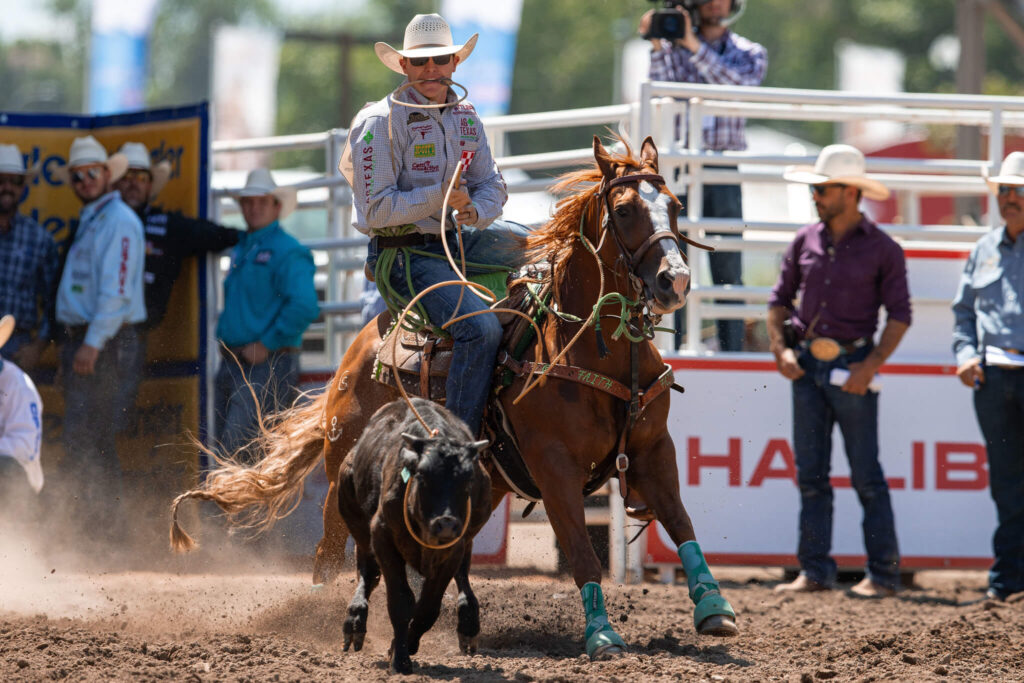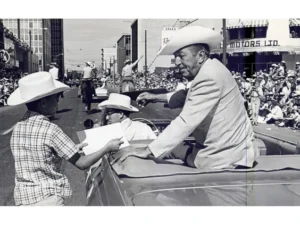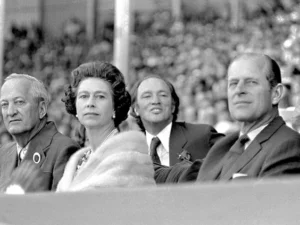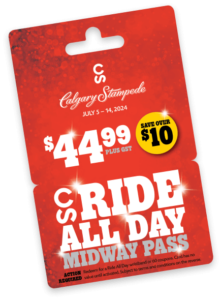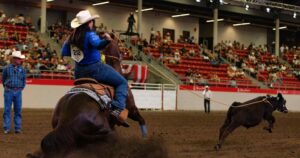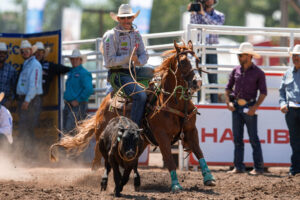Written by: Visit Stampede / Photo Credits: Calgary Stampede, PRCA
A Tradition Born on the Ranch
Tie-down roping, often called calf roping, is one of rodeo’s most traditional and skill-driven events. Its roots stretch deep into the history of ranching in the American and Canadian West, where cowboys needed to quickly catch and restrain calves for branding, doctoring, or sorting. What began as a practical ranch task evolved into a competitive sport, testing a cowboy’s speed, horsemanship, and precision under pressure.
By the early 20th century, tie-down roping had become a staple of professional rodeo, thrilling audiences with its fast-paced action and the unique partnership between cowboy, horse, and calf.
The Rules: A Race Against the Clock
Tie-down roping is a timed event where the cowboy must catch, rope, and tie a calf as quickly as possible.
- The Start:
- The cowboy and horse wait in a box adjacent to the chute.
- The calf is released and given a head start (a “score”) before the cowboy can pursue.
- The Chase:
- The cowboy and horse chase the calf down the arena.
- The cowboy must rope the calf around the neck using a lasso.
- The Dismount:
- The cowboy dismounts, runs to the calf, and “flanks” it—lays it on its side.
- The Tie:
- The cowboy ties three of the calf’s legs together with a “pigging string” (a short rope).
- The cowboy must throw his hands up to signal the completion of the tie.
- The Finish:
- The clock stops when the tie is complete and the judge signals a clean run.
- The cowboy must remount his horse and allow the rope to slacken before the calf tries to escape.
- If the calf gets up before the required time (usually six seconds), the cowboy is disqualified.
Penalties:
- If the cowboy misses the calf on the first loop, he may make a second attempt for a five-second penalty.
- If the calf is not tied within the time limit, the cowboy is disqualified.
- If the rope comes off the calf’s neck after the tie, the run is disqualified.
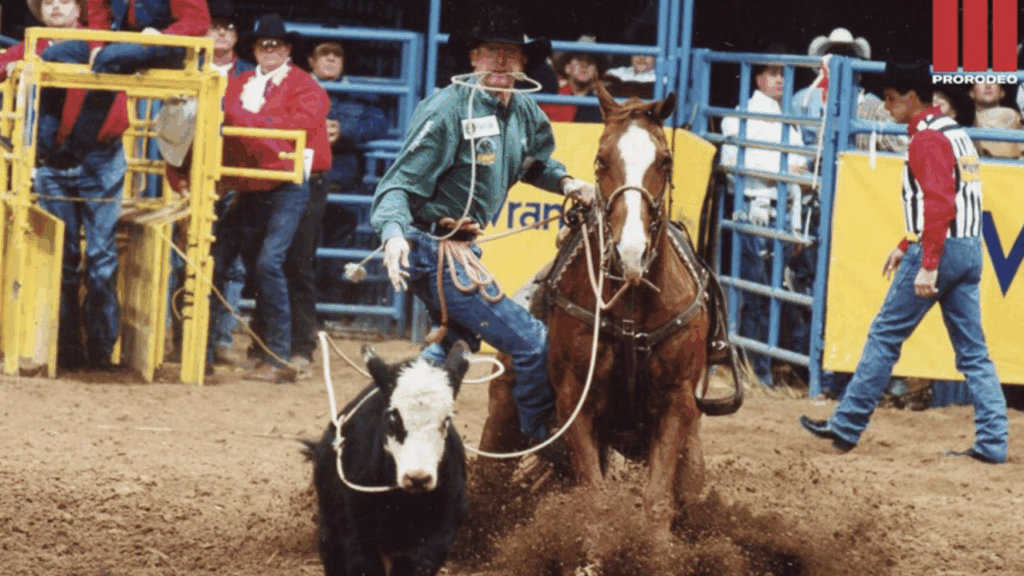
Top Competitors: Legends and Current Stars
Historic Greats:
- Dean Oliver: A dominant force in the 1950s and 1960s, known for his speed and consistency.
- Roy Cooper: The “Super Looper,” a record-setting champion in the 1980s.
- Fred Whitfield: Multiple world champion and one of the most decorated tie-down ropers in history.
Current Standouts:
- Tuf Cooper: Member of the legendary Cooper family and multiple world champion.
- Trevor Brazile: Although best known for all-around titles, Brazile is also a top tie-down roper.
- Marty Yates: Renowned for his lightning-fast times and competitive spirit.
Tie-Down Roping at the Calgary Stampede
At the Calgary Stampede, tie-down roping is a highlight of the rodeo lineup, drawing the best ropers and their highly trained horses from across North America. The Stampede’s unique format, with multiple rounds and a showdown for the top finishers, adds extra excitement and pressure to every run.
Fans are treated to breathtaking displays of speed and precision as cowboys and horses work in perfect harmony. The Stampede’s massive audience and generous prize money make it one of the most prestigious stops on the rodeo circuit, and a win here is a career-defining achievement for any tie-down roper.
Safety and Sportsmanship
Tie-down roping emphasizes horsemanship, animal care, and respect. Calves are carefully selected for size and health, and strict rules are in place to ensure their safety. Cowboys and their horses spend years training together, building the trust and teamwork essential for success.
Why Tie-Down Roping Captivates
Tie-down roping is a celebration of cowboy tradition, skill, and the enduring partnership between human and animal. From its roots on the ranch to the bright lights of the Calgary Stampede, this event continues to inspire and thrill rodeo fans around the world. Whether you’re a longtime enthusiast or a first-time spectator, the sight of cowboy, horse, and calf working in perfect sync is sure to leave you in awe of the art and athleticism of tie-down roping.

